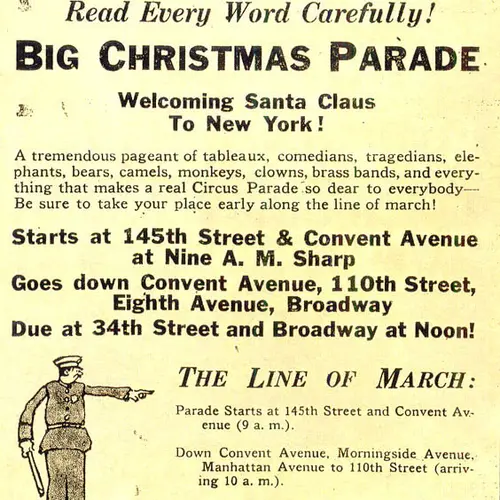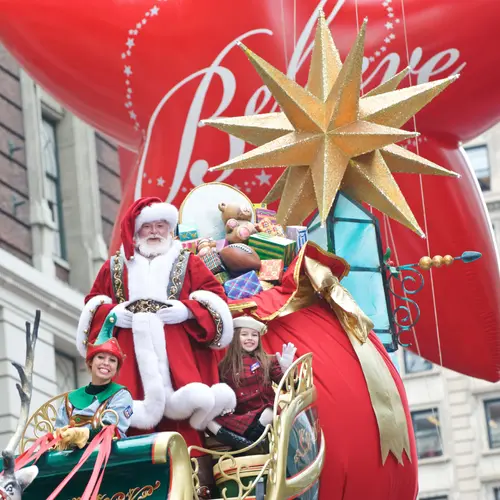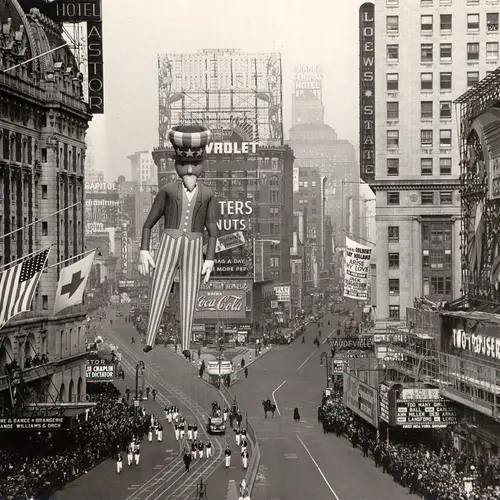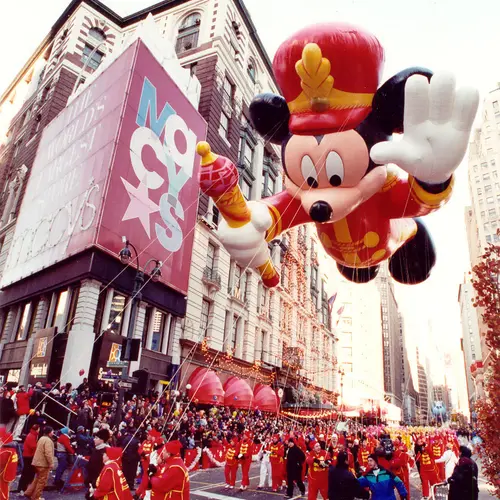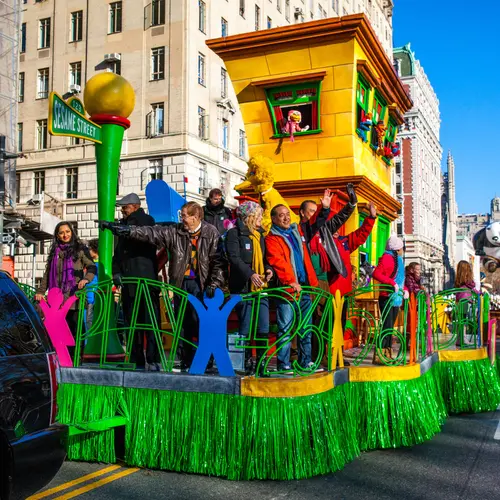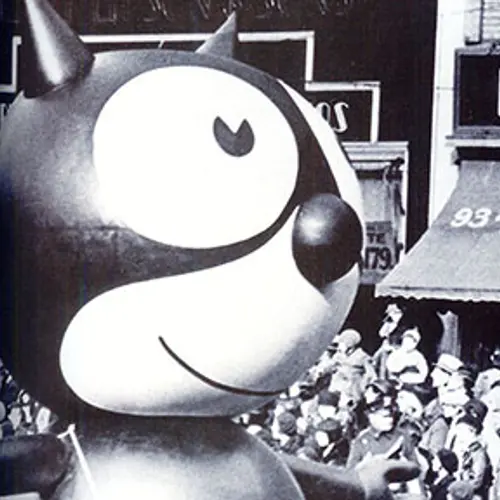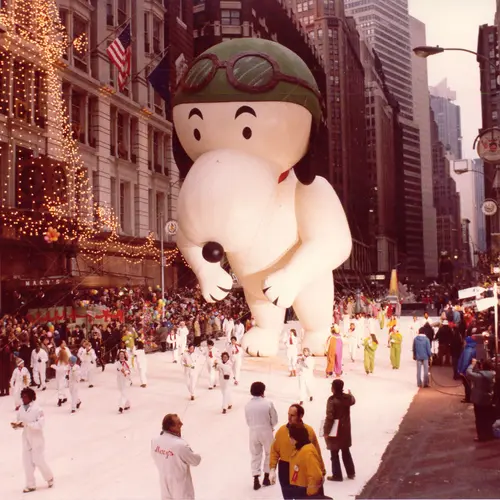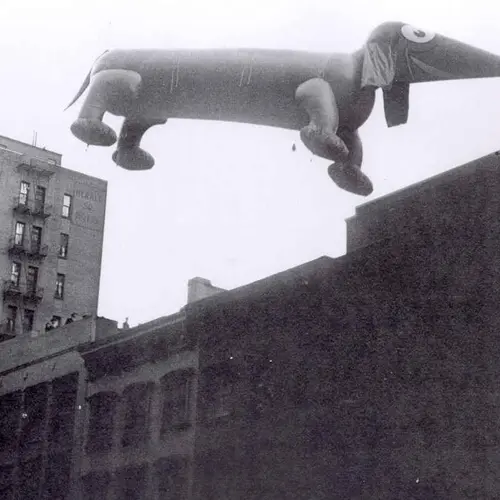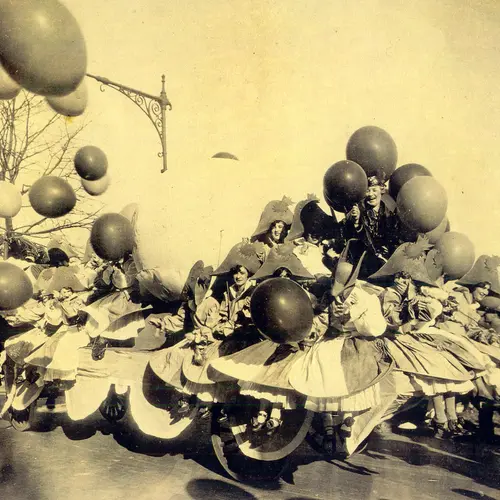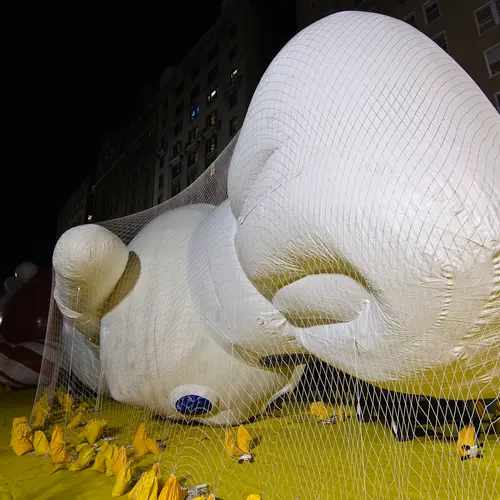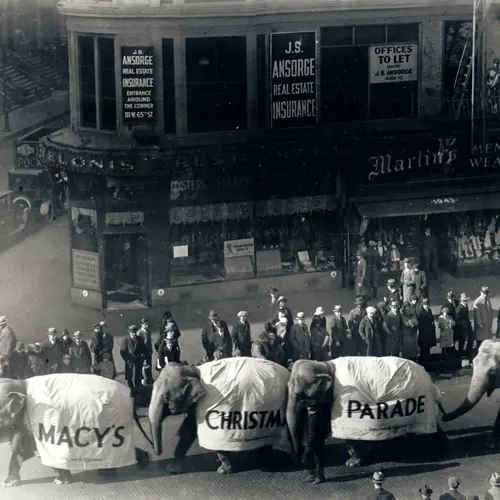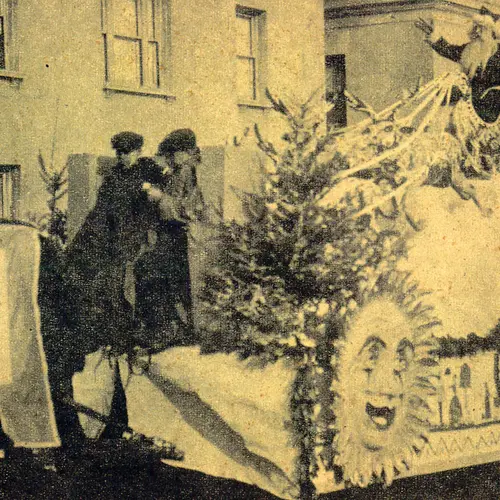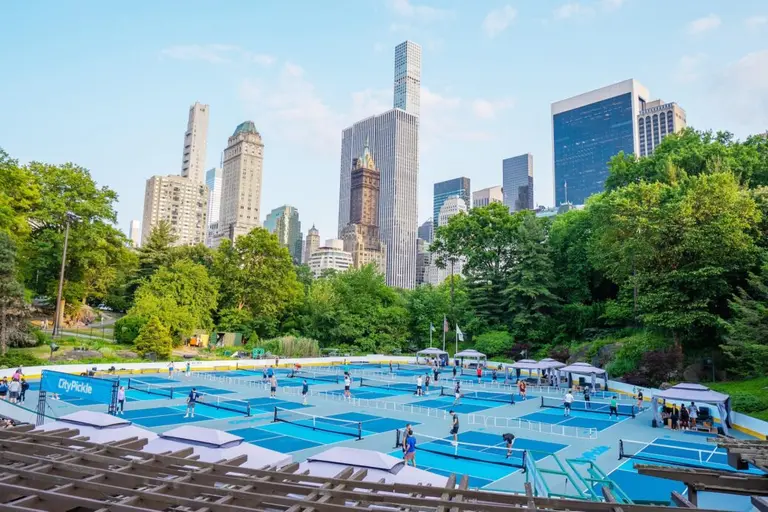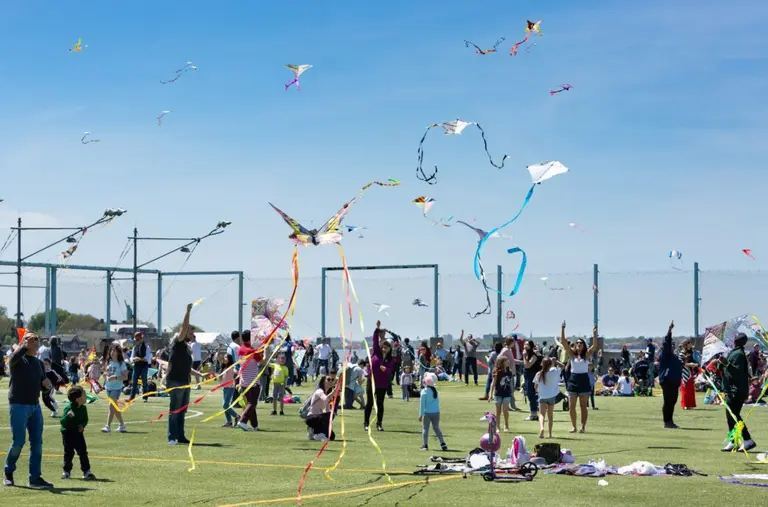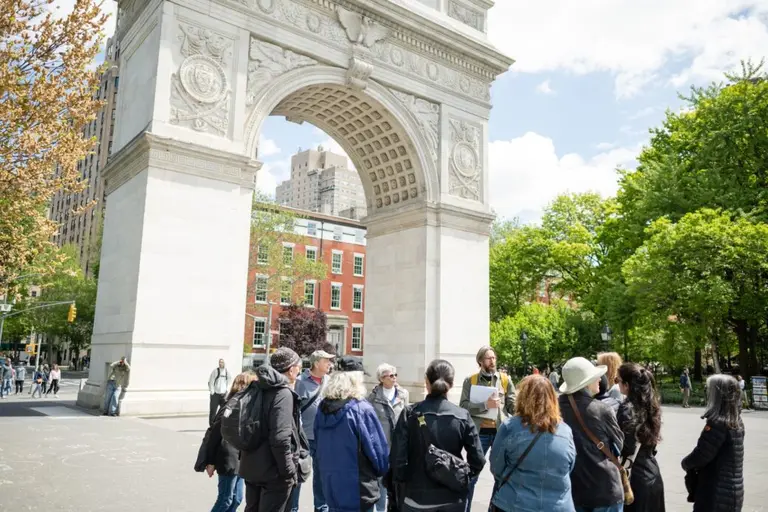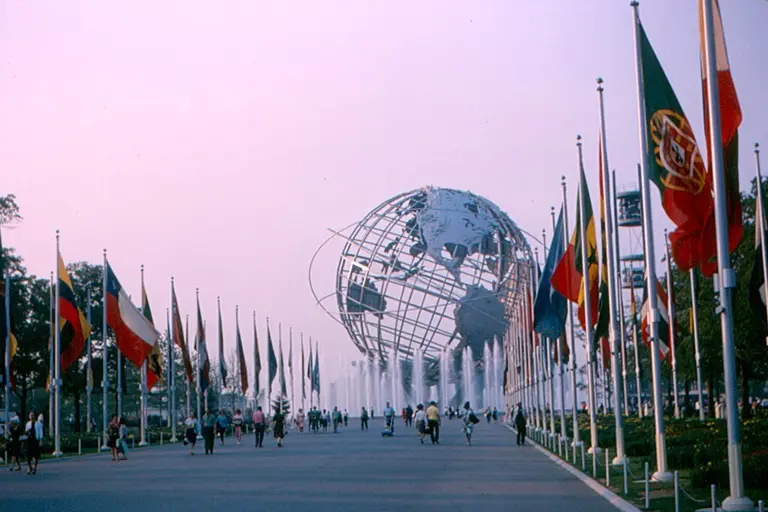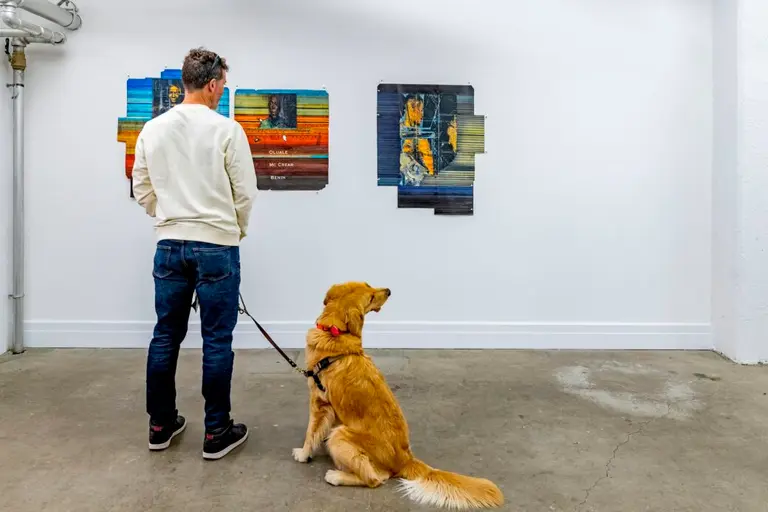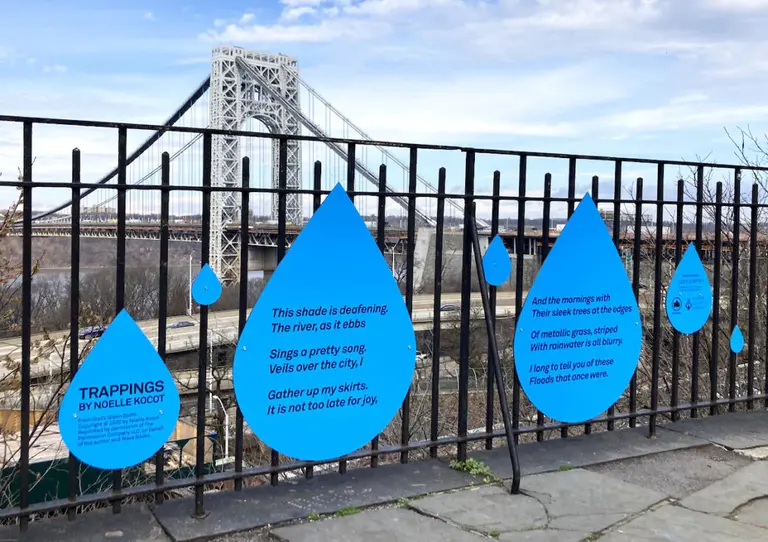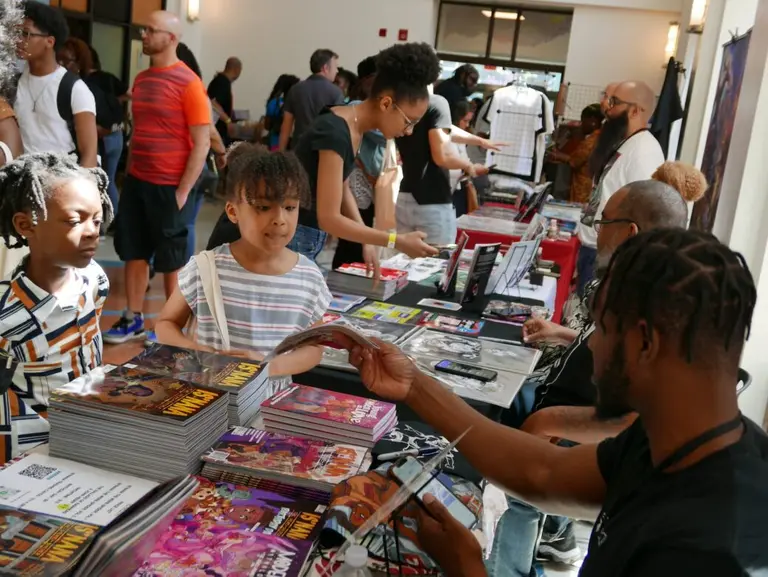10 things you didn’t know about the Macy’s Thanksgiving Day Parade
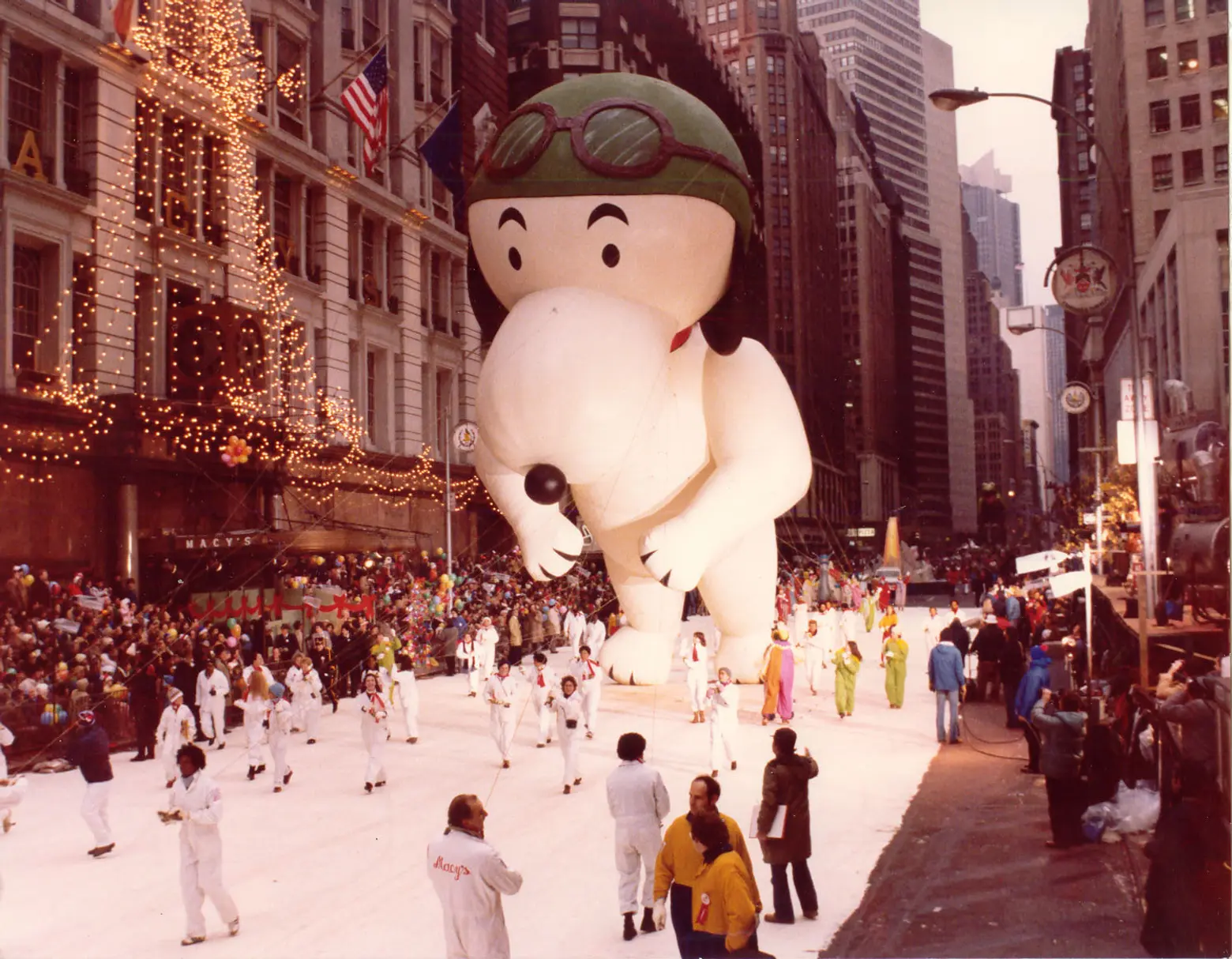
Photo courtesy of Macy’s, Inc.
Since New York City invented the Holiday Season as we know it, it’s only fitting that this city kicks things off in fine form. Thankfully, the good folks at Macy’s have been doing just that since 1924, when they sent the very first Macy’s Thanksgiving Day Parade sauntering down Broadway. The Parade has been synonymous with Thanksgiving for more than 90 years, and it has more secrets up its sleeve than it has balloons in the air. From “balloonatics” and “falloons” to the only time in history the parade was canceled, here are 10 things you might not know about the Macy’s Thanksgiving Day Parade.
 Behold! The original route! Photo courtesy of Macy’s, Inc.
Behold! The original route! Photo courtesy of Macy’s, Inc.
1. Macy’s first parade was “a Marathon of Mirth,” over 6 miles long!
The first Macy’s Thanksgiving Day Parade took place on November 27, 1924. The procession included what the New York Times called, “a retinue of clowns, freaks, animals and floats,” accompanied by Macy’s employees and professional entertainers. Floats of the day included “The Old Lady Who Lived in a Shoe” and “Little Red Riding Hood.” There were even live animals on loan from the Central Park Zoo, including bears, elephants, and donkeys.
Believe it or not, the original parade route dwarfs our current one. That merry march began in Harlem at 145th Street and Convent Avenue. From there, it flowed down Convent, Morningside, and Manhattan Avenues to 110th Street, where it turned west to Broadway. The route followed Broadway down to Columbus Circle, then 8th Avenue to 40th Street, and finally swung back to Broadway for the final stretch to 34th Street where Macy’s celebrated its newly-unveiled holiday windows. That year, the windows were entitled “The Fairy Frolics of Wondertown” and featured marionettes of Mother Goose characters.
The holiday tie-in was no accident…
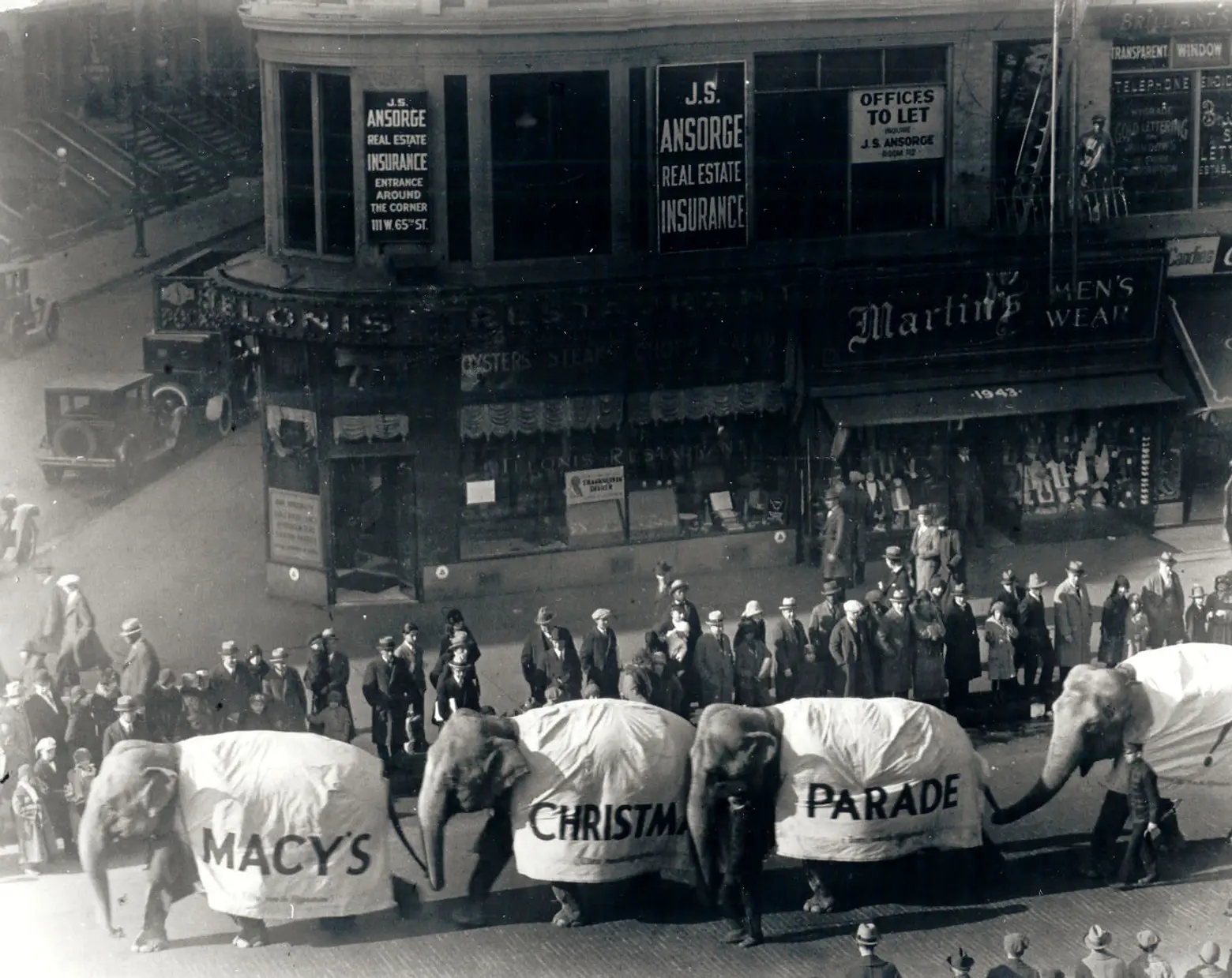
An elephant procession in the first Macy’s Parade, 1924. Photo courtesy of Macy’s, Inc.
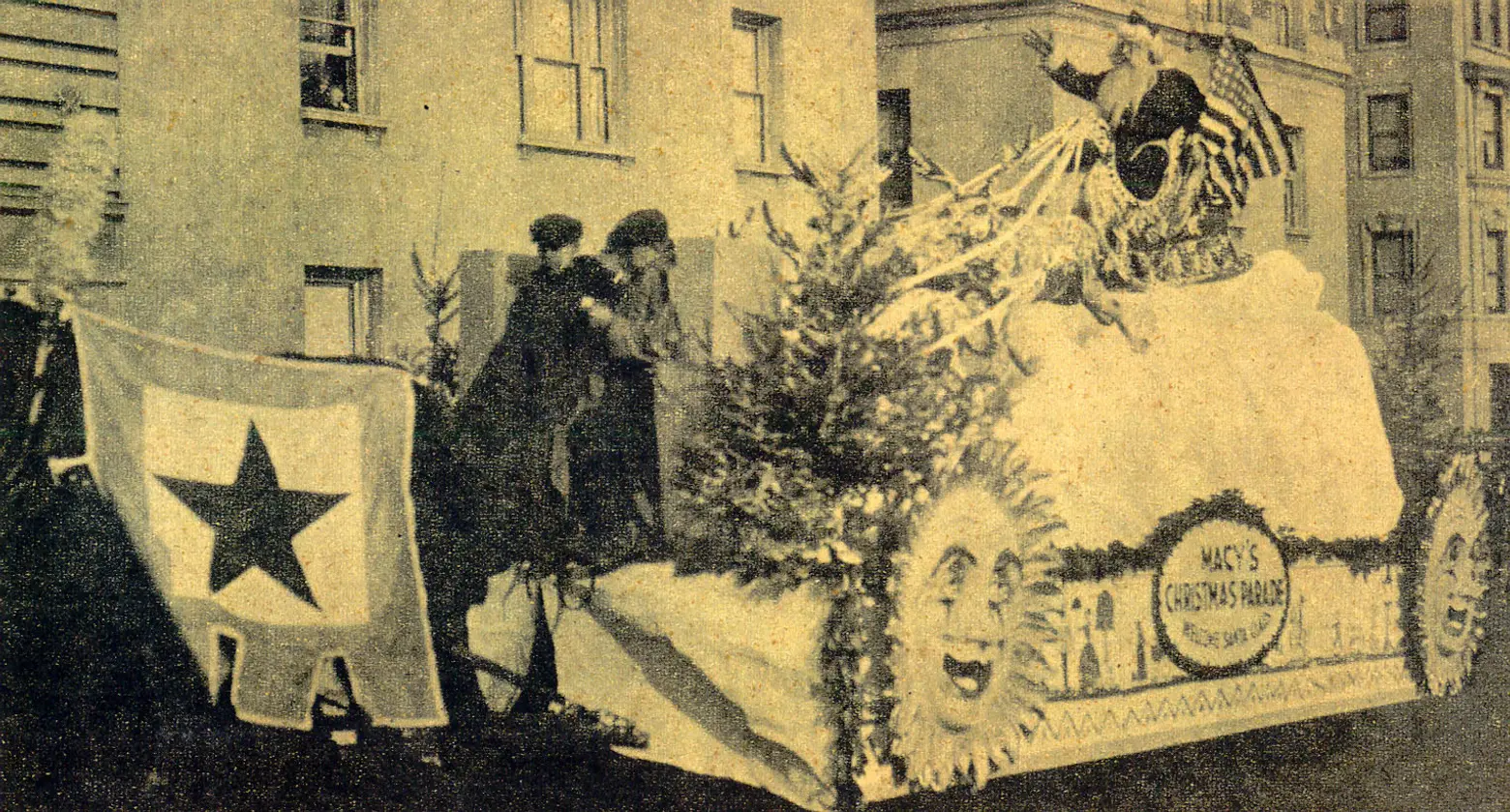 The first Santa float in the first Macy’s Parade, 1924. Photo courtesy of Macy’s, Inc.
The first Santa float in the first Macy’s Parade, 1924. Photo courtesy of Macy’s, Inc.
2. The original parade was a Christmas Parade!
Yes, the first Macy’s Thanksgiving Day Parade took place on Thanksgiving Day, but it was dubbed the “Big Christmas Parade,” tasked with “Welcoming Santa Claus to New York!” (And showing off Macy’s holiday merch.) That’s why Santa still rides in at the end of the Parade!
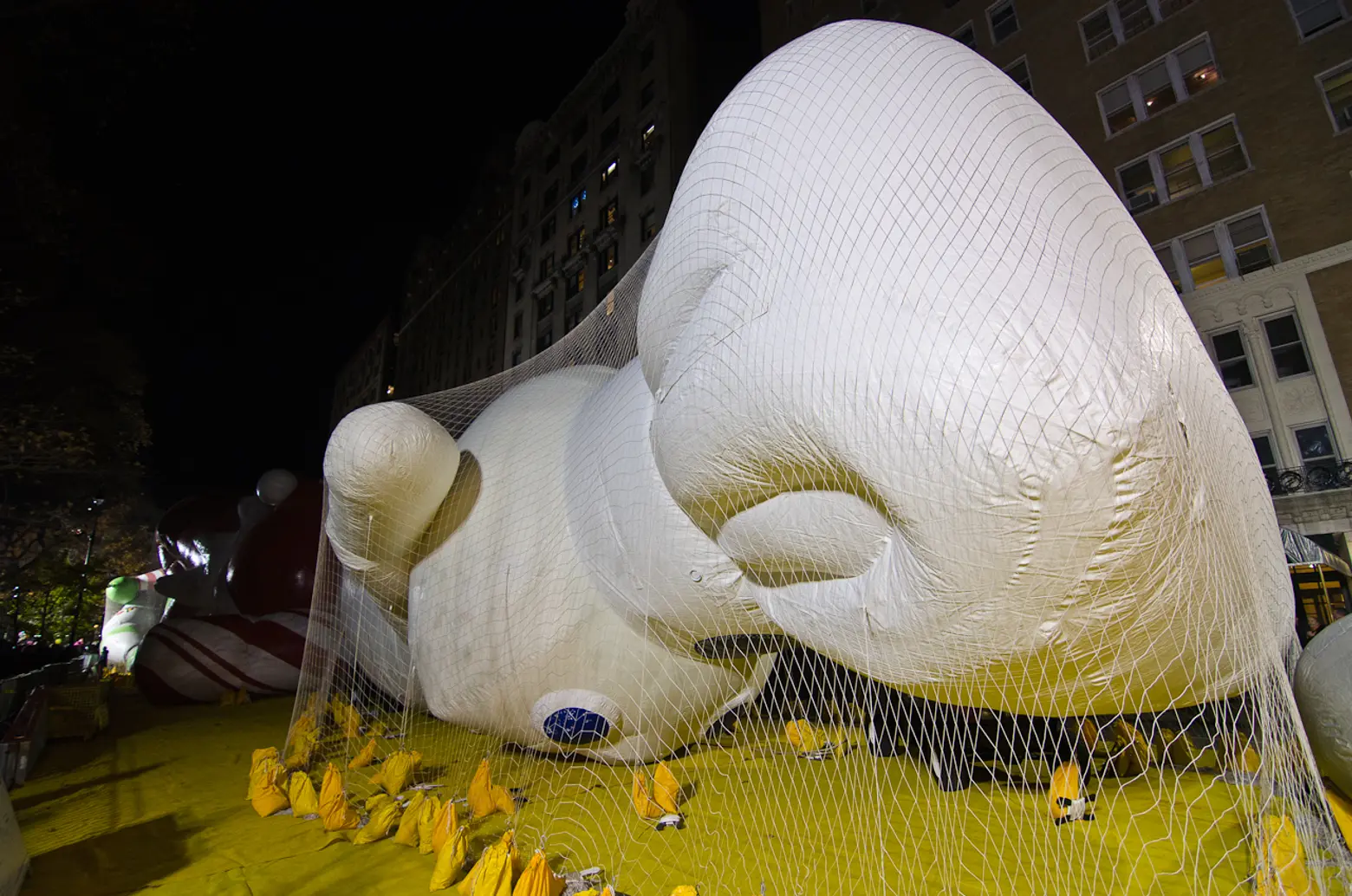
Pillsbury Doughboy™ at Macy’s balloon inflation. Photo courtesy of Macy’s, Inc.
3. The Parade takes 18 months to plan.
The parade might be all about the holiday season, but planning gets underway way before that. Each parade takes about a year and a half to get into peak celebrating form. It all starts with a nation-wide talent search. Which lucky marching bands will make the cut? Which local performance groups will make it to Macy’s? The parade directors look at hundreds of submission videos and then fly around the country to reveal the winners and celebrate with the selected groups. Once talent is chosen, it’s back to balloon land, since each balloon can take up to a year to create.
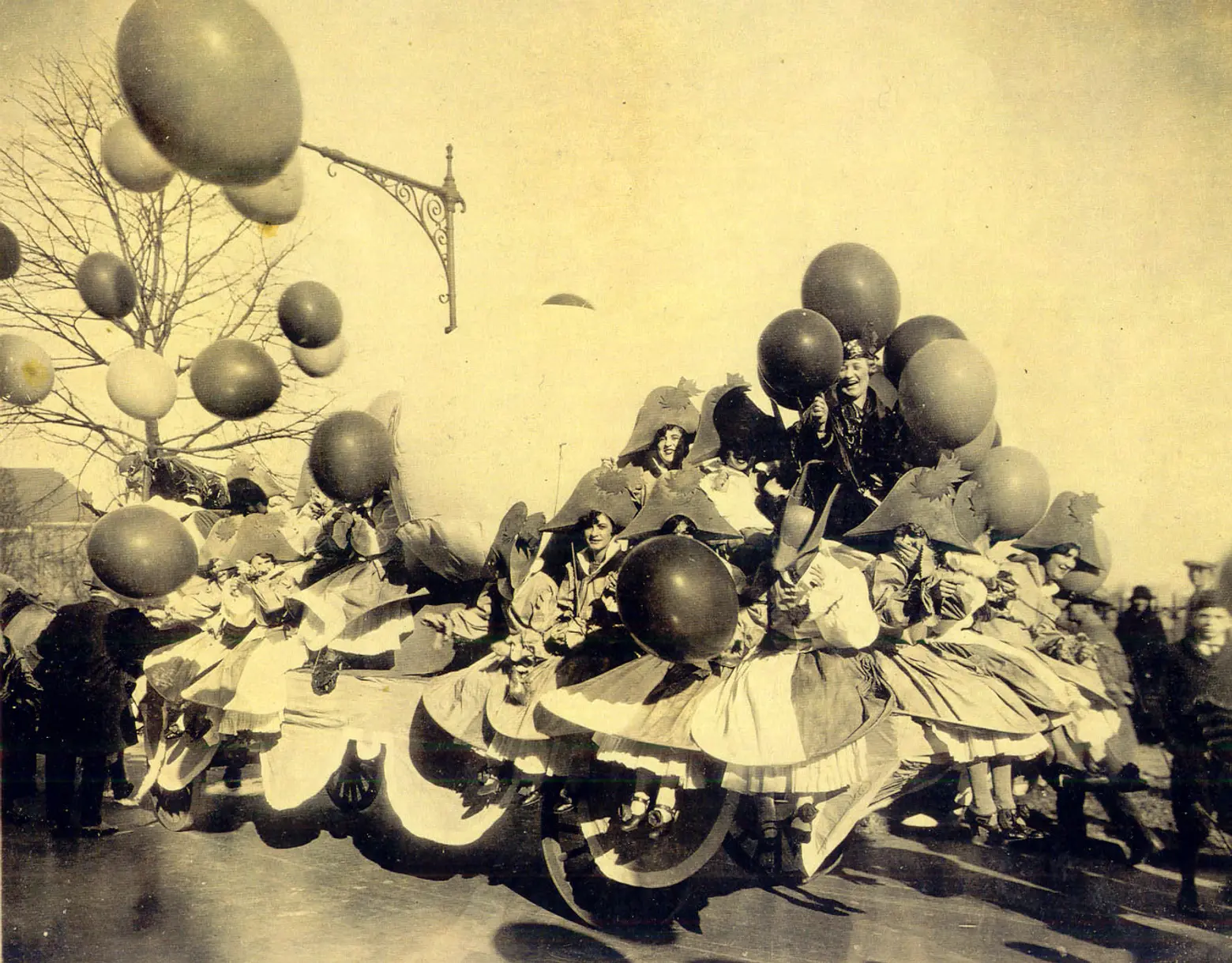
The “Balloonatics” Float, 1926. Photo courtesy of Macy’s, Inc.
4. Balloon Designers are known as “Balloonatics”
It’s not just that balloon designers are lunatics for balloons (hence “balloonatics”)… the folks who design Macy’s balloons actually take their name from the parade’s very first balloon-covered float from 1926, named Ballonatics, which was decked out in traditional balloons like the ones you’d see at a birthday party. Those balloons inspired their much larger counterparts in today’s parade.
All of Macy’s Balloons are made at the Macy’s Parade Studio, a former Tootsie Roll factory in Hoboken. The process begins with computer graphics, moves on to clay models, then finally ends up at fabrication. When the balloons are finished, they regularly weigh 400 pounds. At the warehouse, the balloons are tested rigorously. They sit inflated for six hours, and they even undergo a skin-stress test. (The highly technical term for the skin-stress test is “thumping.”) These behemoth balloons are then deflated, packed up, and driven through the Lincoln Tunnel. They’ll get parade-ready in front of the American Museum of Natural History.
 Photo courtesy of Macy’s, Inc.
Photo courtesy of Macy’s, Inc.
5. Balloon characters debuted in the 1927 Parade
The inaugural balloon characters in the Macy’s Thanksgiving Day Parade included “a human behemoth 21 feet tall” that “had to crawl under an elevated structure” at 66th and Broadway, a 25-foot Dachshund, flocks of “gigantic turkeys and chickens and ducks of heroic size,” which were interspersed with “occasional cannibals,” and of course, a 60-foot-long dinosaur pulled by cavemen.
But it’s not just cavemen who pull the balloons…

Flying Ace Snoopy (the first-ever Snoopy balloon of seven) and his entourage of Balloon Pilots and handlers, 1968. Photo courtesy of Macy’s, Inc.
6. Today’s expert balloon handlers are known as Balloon Pilots
The Balloon Pilots are the most experienced of all the Macy’s balloon handlers. They spend the entire parade walking backward in front of their balloons, guiding the team of 60 people and two vehicles that anchors each balloon. The pilots receive three field-trainings per year and also sit for classroom training. To help each balloon navigate the route, every handler grabs a “bone,” or handling rope. All of the balloon handlers are volunteers. Many are Macy’s employees, but many are layman parade enthusiasts.
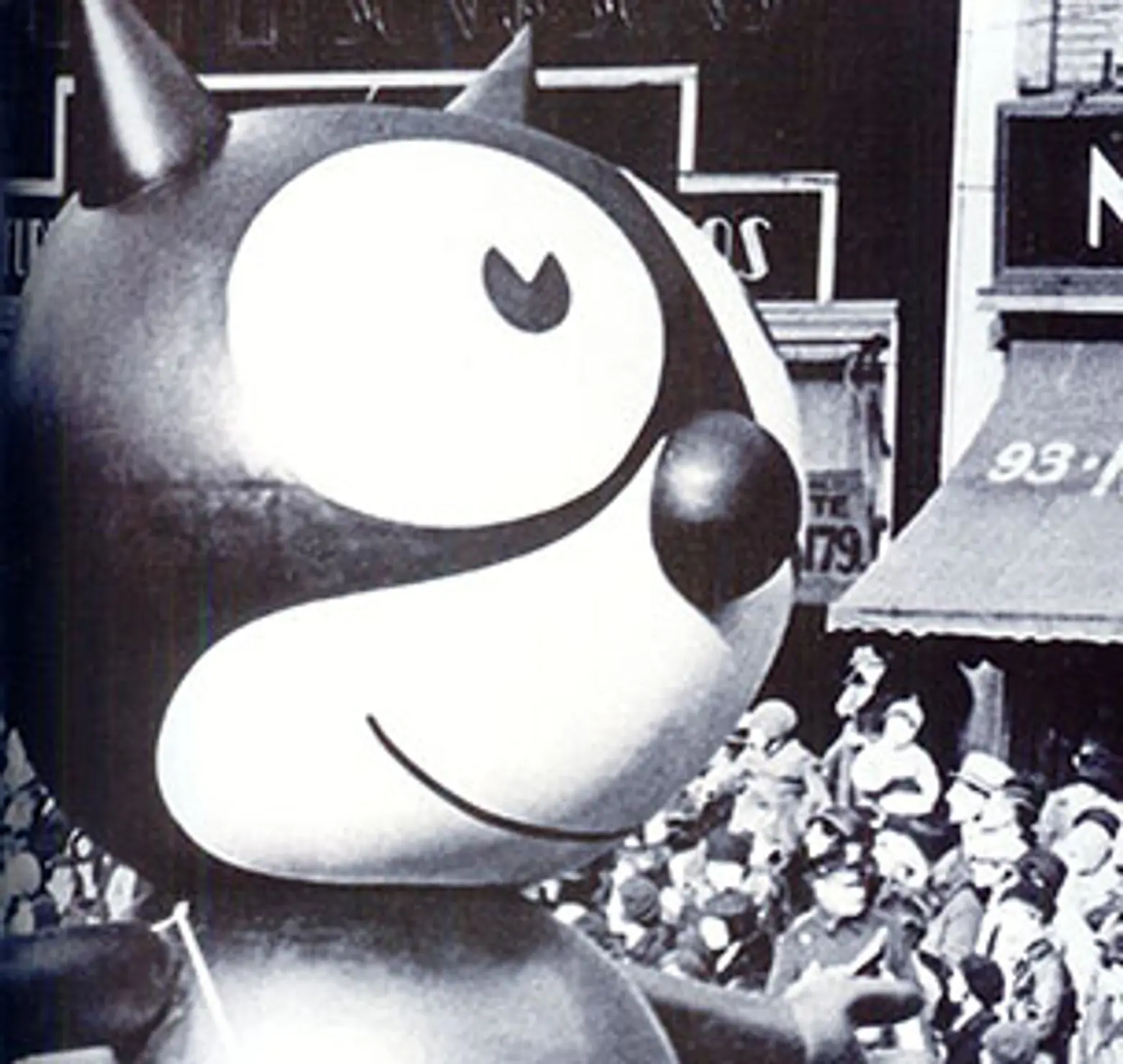 Felix the Cat, before his joyride over Jamaica Bay. Photo courtesy of Macy’s, Inc.
Felix the Cat, before his joyride over Jamaica Bay. Photo courtesy of Macy’s, Inc.
7. And those aren’t the only pilots who have come face to face with a Balloon.
In the 1920s, the age of aviation was just taking flight, so an array of Lucky Lindys were taking to the skies. One pilot, named Clarence E. Chamberlin, actually grabbed hold of a parade balloon mid-flight. Here’s how it went: Beginning in 1928, Macy’s began a fairly short-lived tradition of post-parade “Balloon Races.” Instead of deflating their balloons, Macy’s released them into the air, and offered a $100 reward to anyone who returned them once they had deflated and come back down to earth. (This precipitated a major tug-of-war on Long Island, where would-be winners struggled for a balloon.)
Cut to 1931, when the Balloon Race was in its fourth year. Pilot Clarence E. Chamberlin had picked up a planeload of sightseers at Floyd Bennett Field and was flying over Brooklyn when he saw the giant balloon of Felix the Cat gliding over Jamaica Bay. When one of Chamberlin’s passengers suggested he reach out and grab the balloon, Chamberlin brought his plane parallel to Felix and nabbed it with the plane’s wing. The aviator brought the balloon home and finally returned it to Macy’s.
The following year, when 22-year-old flight student Annette Gibson purposely flew into one of the balloons, (she was saved just feet from crashing into the rooftops of Queens by her quick-thinking instructor) Macy’s officially ended its Balloon Races. Today, the big balloons are deflated after they make their triumphant march down Broadway and taken back to Hoboken to be stored.

1-2-3 SESAME STREET® by Sesame Workshop™ Photo courtesy of Macy’s, Inc.
8. And the Balloons aren’t just in the air…
During the Parade, balloons are not limited to the giant characters you see floating above you. In fact, balloons are part of nearly every aspect of the parade. Indeed, the helium-powered pageantry is so creative, Macy’s has had to come up with new words to describe its balloon creations. There are “falloons” (balloon floats), “balloonicles” (balloon vehicles) and “trycalloons” (balloon tricycles.)
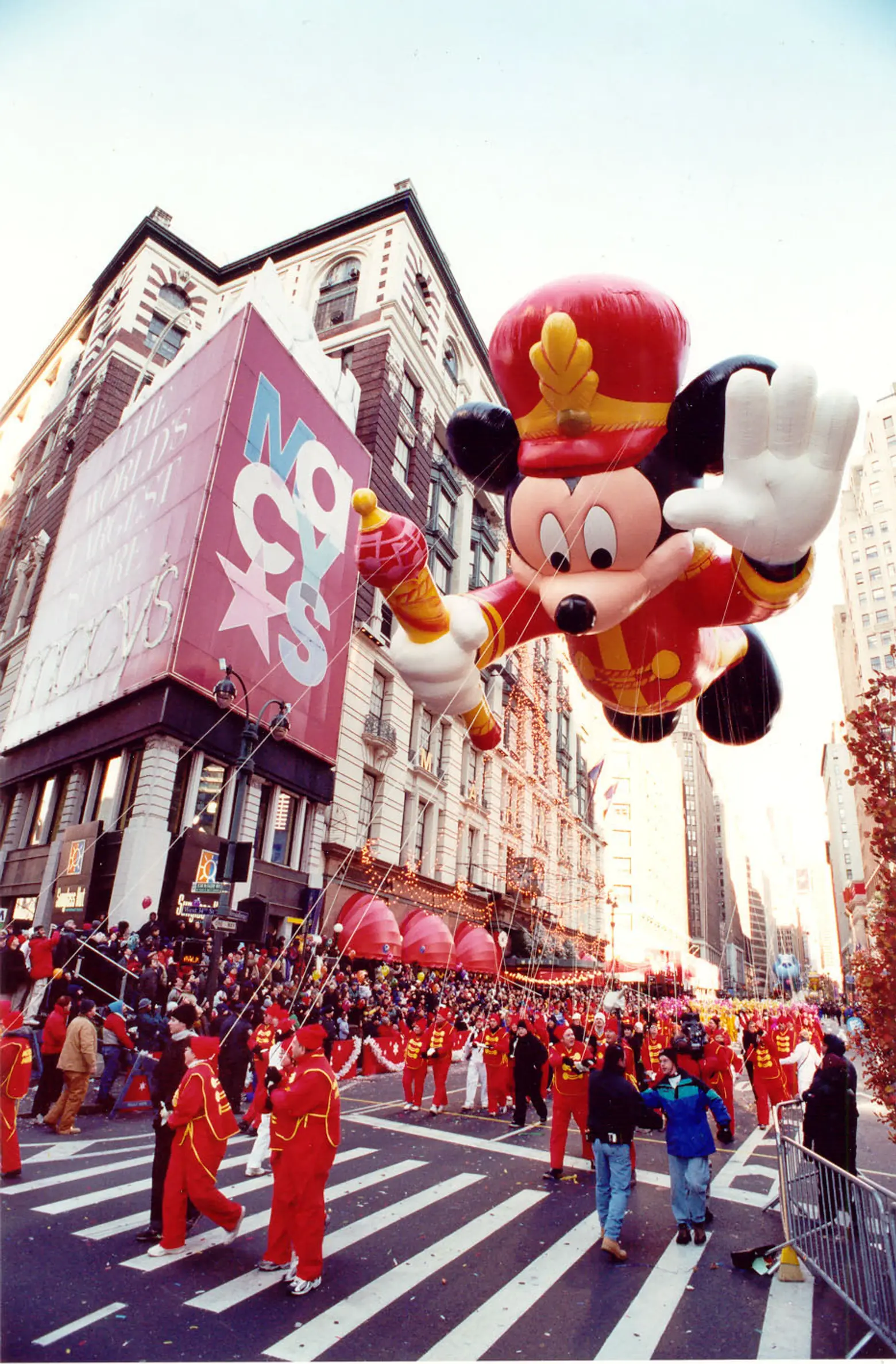 Bandleader Micky Mouse in 2000. Photo courtesy of Macy’s, Inc.
Bandleader Micky Mouse in 2000. Photo courtesy of Macy’s, Inc.
9. Macy’s is the Second Largest Consumer of Helium in the United States
With balloons popping up just about everywhere in the Macy’s Thanksgiving Day Parade, the event requires literal tons of helium. In fact, national helium shortages have actually impacted the parade. For example, in 1958 a helium shortage nearly made the Parade route a no-fly zone. But cranes, hangers, cables, and even vacuum cleaners – pumping in reverse – got the balloons off the ground. Barring the reverse-vacuum method, the parade requires so much helium that Macy’s is actually the second-largest consumer of helium in the United States. The only organization that uses more helium? The United States Government.
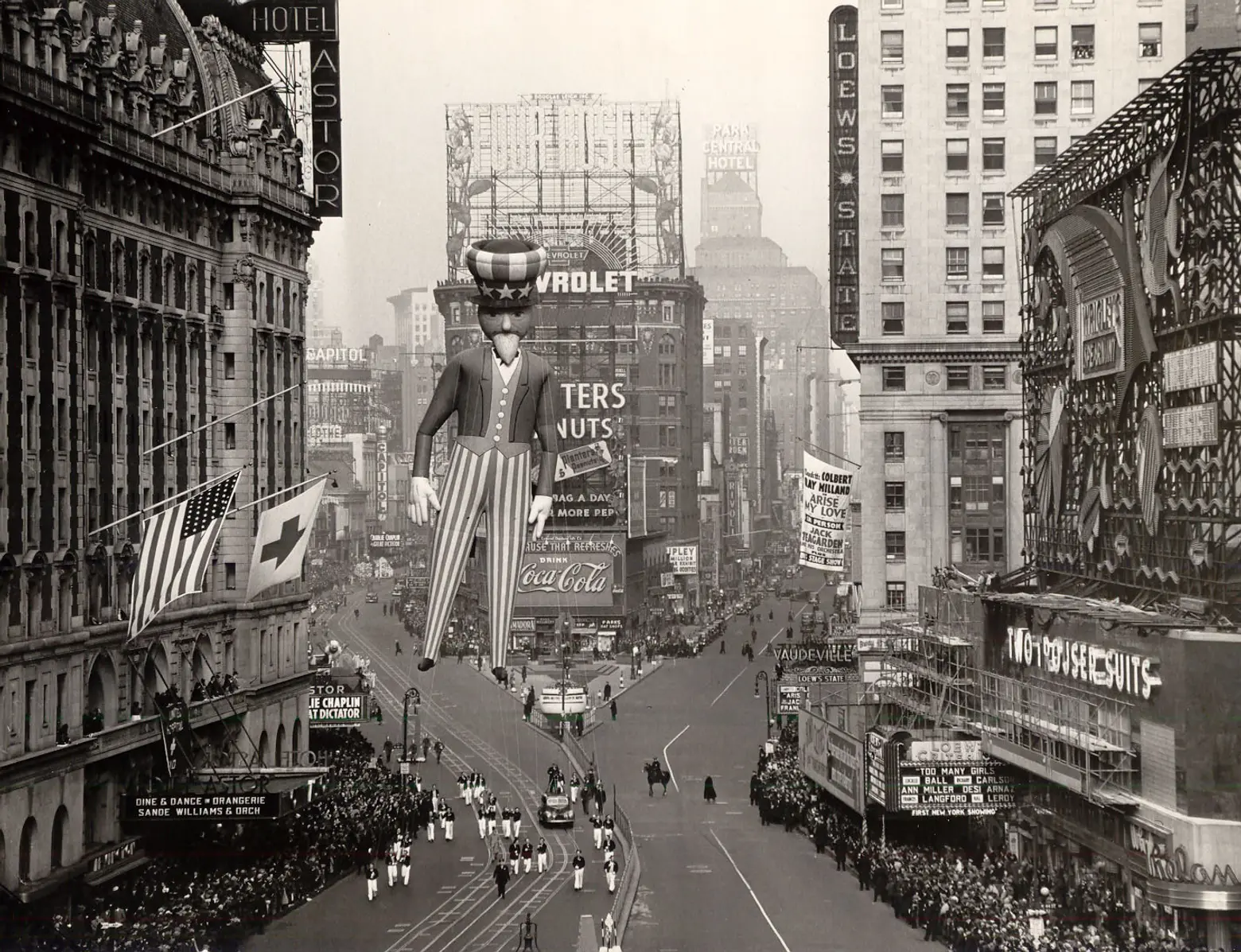
Uncle Sam, 1940s. Photo courtesy of Macy’s, Inc.
10. Since 1924, the Parade has only been canceled for one reason.
Speaking of the United States Government, the only time the Macy’s Thanksgiving Day Parade has been cancel was during WWII. From 1942-1944, Macy’s canceled the parade because rubber and helium were needed for the war effort. In fact, the store deflated its balloons (which were then made out of rubber) and donated them to the U.S. government.
RELATED:
- The history of Macy’s Thanksgiving Day Parade, a grand NYC tradition
- New Yorker Spotlight: Behind the Magic of Macy’s Thanksgiving Day Parade with Creative Director Wesley Whatley
- In the 1800s, a group of NYC artists and writers created the modern-day Santa Claus
+++
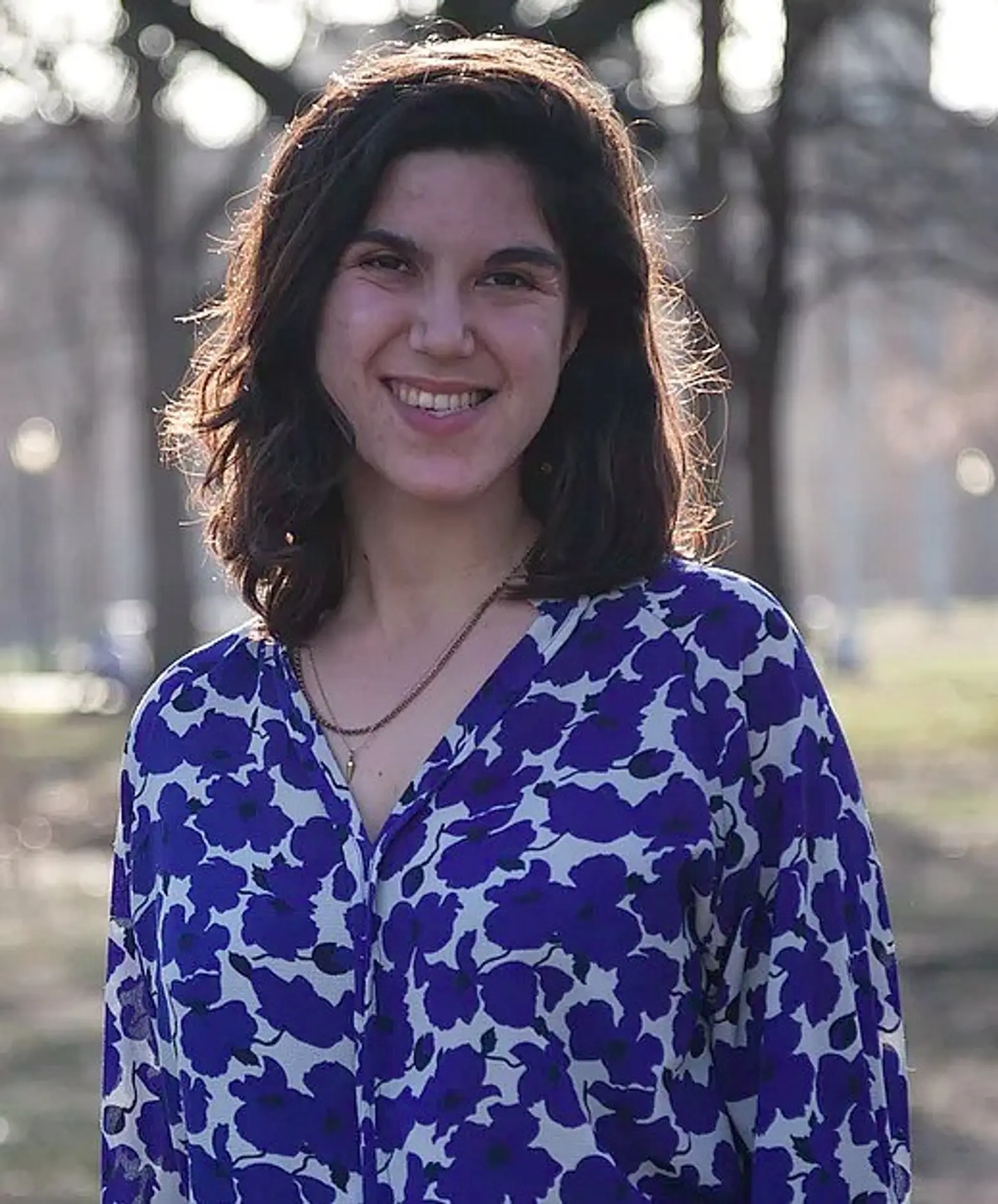 Lucie Levine is the founder of Archive on Parade, a local tour and event company that aims to take New York’s fascinating history out of the archives and into the streets. She’s a Native New Yorker, and licensed New York City tour guide, with a passion for the city’s social, political and cultural history. She has collaborated with local partners including the New York Public Library, The 92nd Street Y, The Brooklyn Brainery, The Society for the Advancement of Social Studies and Nerd Nite to offer exciting tours, lectures and community events all over town. Follow her on Twitter and Instagram.
Lucie Levine is the founder of Archive on Parade, a local tour and event company that aims to take New York’s fascinating history out of the archives and into the streets. She’s a Native New Yorker, and licensed New York City tour guide, with a passion for the city’s social, political and cultural history. She has collaborated with local partners including the New York Public Library, The 92nd Street Y, The Brooklyn Brainery, The Society for the Advancement of Social Studies and Nerd Nite to offer exciting tours, lectures and community events all over town. Follow her on Twitter and Instagram.
